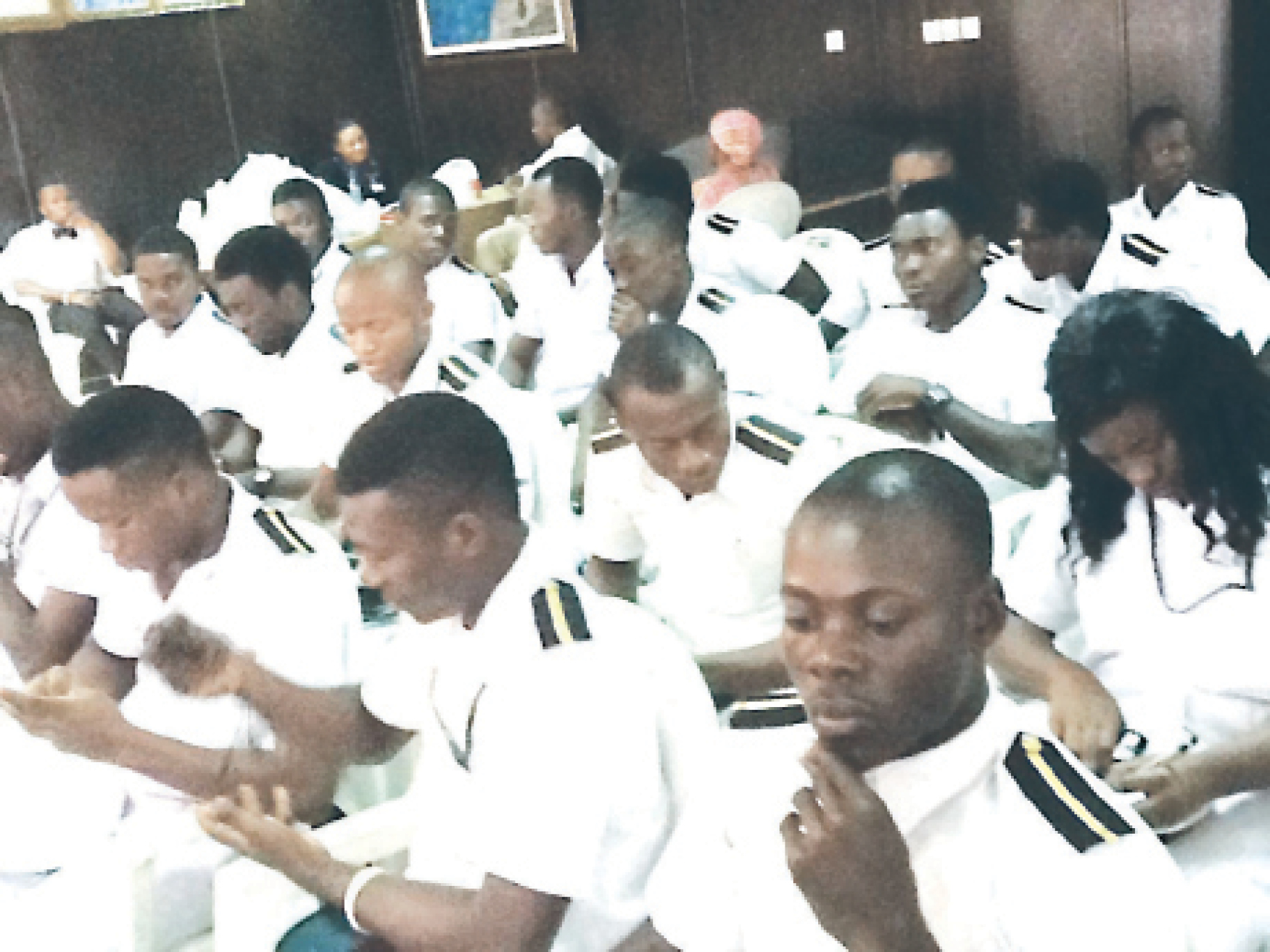Over the years, the Nigerian Maritime Administration and Safety Agency (NIMASA) has conducted Certificate of Competency (CoC) exams for Nigerian seafarers, with many recording poor results after such exams. In this report, TOLA ADENUBI examines why the trend persists, and what needs to be done.
Seafarers are essential part of shipping activities in a maritime nation and form the nucleus of its human capacity and shipping development. They are the human element of any shipping plan, and for any nation desirous of being a maritime stronghold, aside from owing vessels, such nation must have the ability to crew them.
Guided by set standards of the International Maritime Organisation (IMO); the Maritime Administration of each member state or an accredited body licenses seafarers through sets of trainings and certification in accordance with the International Convention on the Standards of Training, Certification and Watchkeeping for Seafarers (STCW) which prescribes the global minimum standards for seafarer training and certification. The Certificate of Competency is then issued to successful seafarers. In Nigeria, the body charged with such responsibility is the Nigeria Maritime Administration and Safety Agency (NIMASA).
Litany of failures
According to data obtained from NIMASA, the number of failures recorded among Nigerian seafarers who sat for Certificate of Competency examinations in the year 2020/2021 was high and very disturbing. While giving a breakdown of the performance of seafarers in terms of examination and certification; the NIMASA DG, Bashir Jamoh during a recent media briefing explained that in the Officers Cadre in 2020, 829 sat for examination and 264 passed while 565 failed the exams, forming a percentage of 32 percentage pass rate and 68 per cent failure. Total certificates revalidated for 2021 is 246.
“You can see a very serious and negative figure in terms of our students sitting for professional examinations of different certificates amounting to 68 per cent failure.
“In 2020 Officers examination, total number that sat for that examination was 610, and total number that passed was only 251, forming a percentage of 41 per cent pass, while 359 failed, amounting to 59 percent failure. The total number of certificates revalidated was 132.
“For Officers Ratings exams in 2020, the total number that sat for the exams was 1,251. Out of this, 926 passed, representing 74 per cent pass mark. The total number of candidates that failed is 325, representing 26 per cent failure.
“For the examination of Ratings in 2021, the total number of students who sat for the exams was 1,327, this is a sharp increase against the 2020 figure of 1,251. The total number of candidates who passed is 990, forming 74 per cent pass mark while total number of candidates who failed is 337, representing 26 percent failure rate.
“The agency is liaising with various institutions to see how we can address this gap. There are so many factors attached to this, and we hope that before the middle of 2022, we would overcome these challenges.”
IN CASE YOU MISSED THESE FROM NIGERIAN TRIBUNE
- ‘Officials initially offered to help but when the number of able-bodied citizens at the centre increased, they left us unattended to’
- Why Ogun Tops List Of ‘Yahoo Boys’ In Nigeria ― Governor Abiodun
- Police, Amotekun after criminals on Lagos-Ibadan expressway
- Suspected cannibal pays N500,000 for boy’s human organs, says ‘that’s my favourite meal, especially the throat’
- Court awards Nnamdi Kanu N1 billion over invasion of his home by military, asks FG to apologise
Why mass failure
Shedding more light on why seafarers fail their CoC exams, the Rector of the Maritime Academy of Nigeria (MAN), Commodore Duja Effedua, in a statement signed recently, said the inability of students to attend classes is the major cause of the mass failure recorded.
According to the statement, “The attention of the management of the Maritime Academy has been drawn to some recent comments on the mass failure in the CoC examinations conducted by NIMASA at the Maritime Academy of Nigeria in 2021.
“It would be recalled that in 2018 and 2019, I warned that the mass failure trend would continue unless certain issues were addressed. My personal observation is that these candidates hardly attend classes. Candidates register for the examination but only about 30 percent of the registered candidates end up attending all the classes. It is pertinent to note that these classes are Revision Classes and not training as misconstrued in many quarters. There is nothing new that these candidates need to be taught as they have already been trained at various institutions including the Academy before coming to the Academy to write the Examinations.
“For example, over 70 per cent of the candidates who wrote the 2021 CoC Examination attended classes sparingly and some others attended classes less than 20 times and many others did not attend classes at all after registration. The Academy maintains an attendance register which is usually forwarded to NIMASA to keep the organisation updated.
“It is important to note that a good number of these CoC candidates have never been to any formal school or have any formal education in Navigation/Seamanship or Engineering except that they qualified to sit for the examination by time, having served onboard vessels for at least 36 months as prescribed by the Standard of Training, Certification and Watchkeeping (STCW) which automatically makes them eligible to write the Examination.
“Having mentioned some of these observations, it will be miraculous for such candidates and those who make scanty appearances at lectures to pass examinations.
“It should also be noted that the Academy’s role is simply to conduct Revision Classes for the candidates to rekindle their knowledge of what they already know before becoming eligible to sit for the CoC examinations. The truth is that the mass failure has nothing to do with the quality of instructions but can be attributed to poor attitude and poor classroom attendance by several candidates.
“The candidates can also not be blamed 100 percent for poor classroom attendance because, there are no way candidates can leave their employers to spend six months at the Academy in the name of Revision Classes as they will definitely lose their jobs.
“In the same vein, one cannot also blame the ship owners who have invested billions of Naira to buy vessels and also spend millions to maintain these vessels, only to leave these vessels lying idle at jetties because their crew is not available. The end state for buying these vessels is to make money by moving goods and providing services from one point to the other using this crew, and if the crew are not available because they have gone for revision classes for six months, how do you expect the ship owners to reap the dividends of their investments?”
Way forward
If Nigeria hopes to improve her seafarers CoC results in the coming years, the Maritime Administration and the various maritime training institutions scattered across the country has to collaborate more to get the best from this student. In the words of a former NIMASA Director, Captain Warredi Enisouh, “Candidates who fail to make the required attendance percentage during classroom lectures for CoC exams ought to be made to face the consequences of their actions.
“After every six months of lectures, the maritime training institutions should always recommend to NIMASA what should be done to seafarers who fail to attend classes. The recommendation should accompany the Attendance Register sent to NIMASA and should always include possible sanctions. By that, NIMASA will then implement recommended sanction on such students to forestall poor results in our CoC exams. The international community is watching us. If we hope to be a major seafaring nation, we cannot continue to have abysmal results during our CoC exams.”
WATCH TOP VIDEOS FROM NIGERIAN TRIBUNE TV
- Relationship Hangout: Public vs Private Proposals – Which Truly Wins in Love?
- “No” Is a Complete Sentence: Why You Should Stop Feeling Guilty
- Relationship Hangout: Friendship Talk 2025 – How to Be a Good Friend & Big Questions on Friendship
- Police Overpower Armed Robbers in Ibadan After Fierce Struggle






